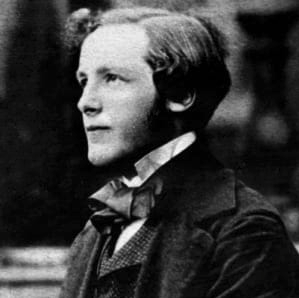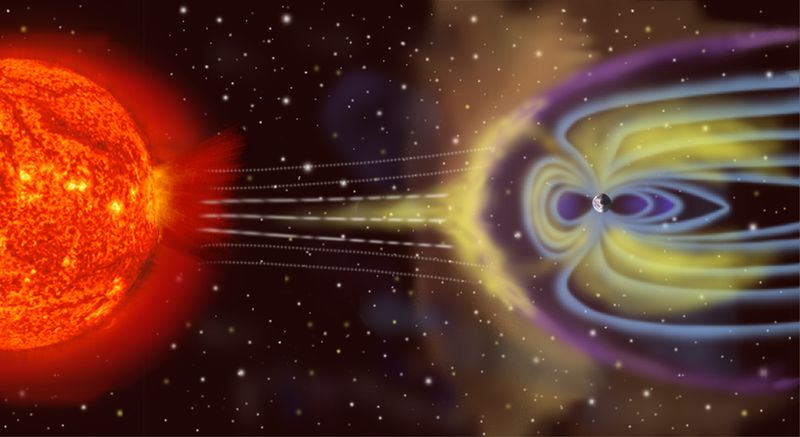Study Guide: James Clerk Maxwell

James Clerk Maxwell (1831 - 1879)
Scientists of the Royal Society of Edinburgh must have been stunned to discover that the paper submitted to them in 1845 was the work of a 14-year-old boy. James Clerk Maxwell’s first scientific paper, “On the Description of Oval Curves", marked the beginning of an impressive career in science.
Maxwell was born in Edinburgh, Scotland, on June 13, 1831. His family’s original name was Clerk. “Maxwell” was added later. Maxwell’s mother died when he was 8 years old. He was sent to Edinburgh Academy in 1841, and at the age of 16 entered the University of Edinburgh.
In 1850, he went to the University of Cambridge. There he won honors and prizes in mathematics and became a lecturer at Trinity College. Maxwell obtained a mathematics degree in 1854. Two years later he joined the faculty of King’s College, London.
Maxwell began by investigating the work of other scientists. Faraday’s understanding of mathematical fields gave him the insight to describe electromagnetism with field equations, which led to more discoveries by many others.
Classical electromagnetic field theory emerged in more or less complete form in 1873 in Maxwell’s, “A Treatise on Electricity and Magnetism”. Maxwell based his theory on the intuitive insights of Michael Faraday, but was able to more accurately describe and prove them using mathematics. The wide acceptance of Maxwell’s theory caused a fundamental shift in our understanding of physical reality, leading in time to the revolutionary ideas of Einstein and others.
He retired in 1865 to carry on his experimental work but returned to Cambridge in 1871 to plan the famous Cavendish laboratory and was its first professor of physics.
Maxwell died on November 5, 1879, before many of his theories could be successfully proven.
Maxwell’s Equations
In his famous work with electricity and magnetism, he suggested that electromagnetism moved through space in waves that could be generated in the laboratory. By calculating their velocity he found that the speed of electromagnetic waves was the same as that of light waves. He concluded that light waves are electromagnetic in nature. At the time there was no evidence of comparable waves that could be transmitted or detected over any considerable distance.
Maxwell expressed all the fundamental laws of light, electricity, and magnetism in a few mathematical equations, commonly called the Maxwell field equations. Maxwell’s Equations are critical in understanding electromagnetics. They are formidable to look at—so complicated that even many electrical engineers and physicists don’t really know what they mean.
The first equation allows us to calculate the electric field created by a charge. The second equation allows us to calculate the magnetic field. The other two equations describe how fields ‘circulate’ around their sources.
- Ampère’s Law with Maxwell’s extension: Magnetic fields ‘circulate’ around electric currents and time varying electric fields
- Faraday’s Law: Electric fields ‘circulate’ around time varying magnetic fields
Interpretation of Farday’s Law
Faraday’s law shows that a changing magnetic field within a loop gives rise to an induced current, which is due to a force (or voltage) within that circuit. We can then say the following about Farday’s Law:
- Electric Current gives rise to magnetic fields. Magnetic Fields around a circuit gives rise to electric current.
- A Magnetic Field changing in time gives rise to an Electric Field circulating around it.
- A circulating Electric Field in time gives rise to a Magnetic Field changing in time.
Farday’s Law is powerful. It shows that the underlying nature of the universe is based on symmetry.
These equations were long considered a fundamental law of the universe, like Newton’s laws of motion and gravitation. It has since been discoverd that they do not apply to quantum mechanics, wave mechanics, or the theory of relativity.
Accomplishments
Maxwell’s theory of electromagnetic waves established him as one of the world’s greatest scientists. His discoveries led to advances in numerous fields, including astronomy, energy production, medicine, commputing, transportation and communications.
Maxwell contributed to the study of color blindness and color vision and the study of Saturn’s rings. Maxwell’s theory that the rings are composed of different masses of matter was confirmed 100 years later by the first Voyager space probe to reach Saturn.
Although Maxwell did not originate the kinetic theory of gases, he was the first to apply methods of probability and statistics to describe the properties of gas molecules.
The first color photographs were created using his investigations of color theory. This was done by a photographing a subject through filters of the three primary colors of light (red, green, and blue) and then recombining the images.
Earth’s Magnetosphere
In a geomagnetic storm, a surge in the flux of charged particles temporarily alters Earth’s magnetic field, which induces electric fields in Earth’s atmosphere, causing the Northern Lights and surges in electrical power grids.
Sources
- https://kids.britannica.com/students/article/James-Clerk-Maxwell/275745
- https://kids.kiddle.co/Maxwell%27s_equations
- https://www.maxwells-equations.com/index.php#maxwells



